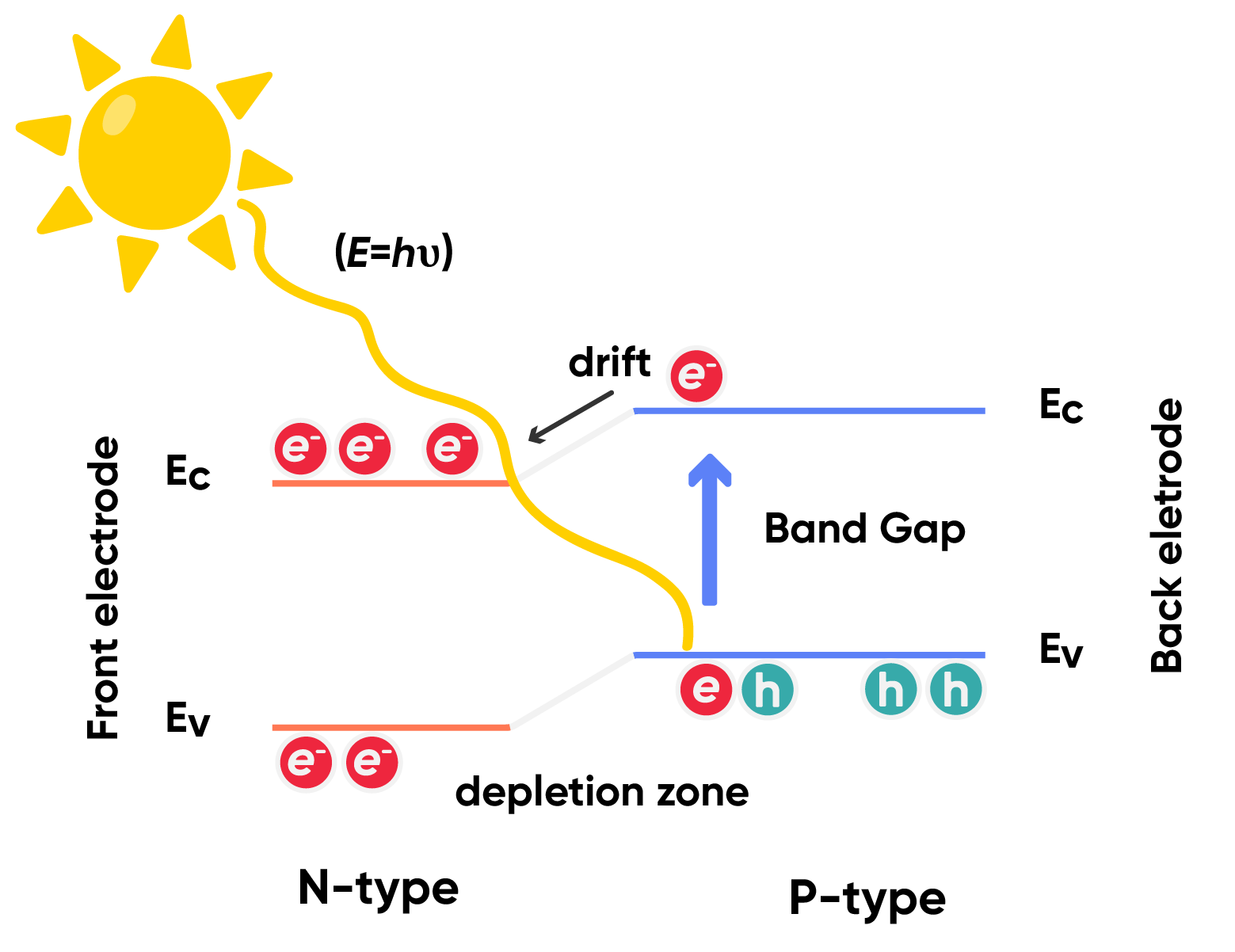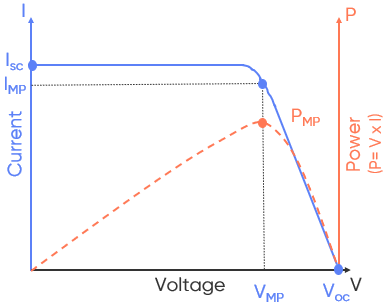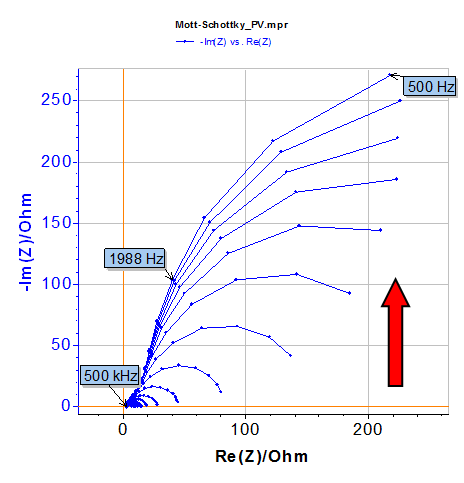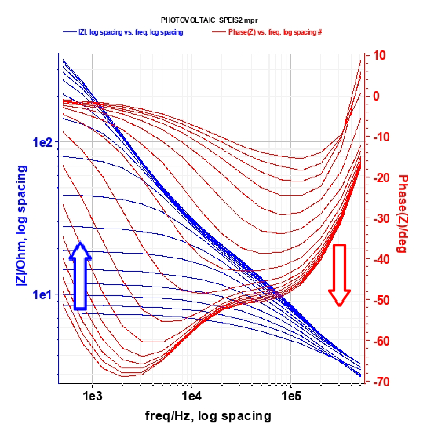Perovskite Solar Cells: Electrochemical Techniques and Insights
Latest updated: March 26, 2025Introduction
While various low-emission technologies are advancing to meet our growing global electricity demand, solar photovoltaic (PV) stands out as particularly thriving. The IEA states that “solar PV is expected to account for roughly half of global electricity demand growth to 2027 (…). Electricity generation from solar PV surpassed that from coal in the European Union in 2024, with its share in the generation mix exceeding 10%. China, the United States and India are all set to see solar PV’s share reach 10% over the forecast period as well.” [1]
Solar energy represents the most abundant renewable resource available on our planet, and solar photovoltaic technology indeed continues to show its great potential by increasing the efficiency and affordability of solar cells. Among emerging solar technologies, perovskite solar cells represent a promising advancement in photovoltaics.
Solar cell and photovoltaic effect
A solar cell is a photovoltaic device that directly converts sunlight into electrical energy through the photovoltaic effect.
Figure 1: (a) Schematic of PV p-n junction (b) Energy diagram: When photons with greater energy than the band gap hit the solar cell, they generate an electron-hole (e-h) pair. Electrons move towards the n-type side of the junction and holes toward the p-type side, where they are collected by the external circuit. This current is used to do work on an electrical load.
PV devices are made of semiconductor materials, usually silicon, that feature a precisely designed internal asymmetry created through selective doping of different regions with specific impurities. When photons from sunlight strike the solar cell, they transfer their energy to electrons in the semiconductor material, elevating these electrons to higher energy states and creating electron-hole pairs. Unlike in homogeneous materials where these excited electrons would simply relax back to their ground state, the cell asymmetry (interface between differently doped semiconductors region) prevents recombination by effectively separating the charge carriers (i.e. electrons and holes). The built-in electric potential difference drives the electrons through an external circuit, resulting in an electric current that can power external devices.
Perovskite solar cells
Usually, solar cells are categorized into three generations:
- First-generation are crystalline silicon solar cells (monocrystalline or polycrystalline)
- Second-generation are thin-film solar cells including amorphous silicon, copper indium gallium selenide, cadmium telluride…
- Third-generation are emerging technologies such as perovskite solar cells, quantum dots solar cells, dye-sensitized solar cells, organic solar cells…
The predominant technology on the market is crystalline silicon solar cells. However, silicon requires expensive installation, high-energy need, and complex fabrication processes. Perovskite solar cells (PSCs) have become more attractive as they cost less than silicon solar cells, are easier to manufacture, offer better mechanical flexibility, can function with imperfections and impurities and have a similar or better efficiency than silicon cells (around 26% ). [2-3]
Intrinsic properties of perovskite-based solar cells such as higher optical absorption properties, tunable band gap, higher carrier mobility and longer carrier diffusion length are widely studied to enable improvement in efficiency.[4]
Did you know? The term perovskite originally refers to the calcium titanium oxide (CaTiO3) mineral, discovered in the Ural Mountains in 1839 and named in honor of the mineralogist A.L. Perovskite. Today, the term perovskite designates a class of materials that share the crystal structure based on the general chemical formula ABX3.[5]
Perovskite solar cells characterization
I-V curve
The conversion efficiency of perovskite solar cells can be determined from the current-voltage curve, also known as I-V curve. This graphic can be obtained by applying a linear potential sweep and measuring the corresponding current that flows through the device. Generally, a second representation is overlaid on the same graph to display the power as function of the voltage.
I-V curve
Characteristic parameters of the cell such as maximum current (IMP), maximum potential (VMP), maximum power (PMP), short-circuit current (ISC), open circuit voltage (VOC), fill factor (FF) and efficiency (η or PCE) can be easily displayed and determined. The fill factor is the ratio between the maximum power and theoretical power (ISC multiplied by VOC), it should be ideally close to 1. The conversion efficiency corresponds to the ratio of maximum power and the input power (i.e. incident radiation flux per the surface area of the cell).
Note: Determination of the power conversion efficiency can be affected by fluctuations in the current-voltage curve, called hysteresis. Researchers have attributed this phenomenon to capacitive effect, along with several other contributing factors. [6]
Mott-Schottky
In order to understand physical mechanisms of perovskite solar cells such as stability and degradation mechanisms or to understand the charge carrier dynamics, electrochemical impedance spectroscopy (EIS) is commonly used, in particular the Mott-Schottky analysis. [7-8]
During potentiostatic EIS, a sinusoidal wave is applied around a potential at different frequencies, the current is measured, and the resulting impedance of the system is calculated and displayed as a Nyquist or Bode plot. The different physical processes will respond at different characteristic frequencies (charge transport resistance, dielectric response and capacitive response of the perovskite…).
The Mott-Schottky relationship involves the apparent capacitance measurement as a function of potential under depletion condition (state where the semiconductor is fully depleted of majority carriers within the space charge region). You can learn how to perform Mott-Schottky in our dedicated and how to follow the values of all the elements of the equivalent circuit as function of the voltage with our EIS fitting tool Z Fit.
Mott-Schottky investigations on EC-Lab, Application Note 24
Need help to select the appropriate equivalent circuit? Consult our articles and Application Notes dedicated to EIS, including advanced topic such as How to fit transmission lines with ZFit (EIS transmission lines) Battery – Application Note 43 – BioLogic.
IMVS technique
Another useful technique to understand perovskite solar cells under operation is the Intensity Modulated photoVoltage Spectroscopy (IMVS). It measures the modulation of photovoltage in response to the modulation of incident light intensity at different frequencies. Learn how to perform IMVS in our dedicated Application Note 30.
Conclusion
Perovskite solar cells hold promise for the development of cost-effective and performant photovoltaic cells. I-V curve and Mott-Schottky analysis are two complementary tools to investigate the performance and efficiency of solar cells.
| Techniques | I-V curve | Mott-Schottky | EIS | IMVS |
|---|---|---|---|---|
| Principle | Measures current response to applied voltage | Measures capacitance-voltage relationship | Measures impedance response to small AC voltage signal over range of frequencies | Measures photovoltage response to modulated light intensity at different frequencies |
| Key parameters | Maximum current (IMP), maximum potential (VMP), maximum power (PMP), short-circuit current (ISC), open circuit voltage (VOC), fill factor (FF), efficiency (η or PCE) | Flat band potential, carrier density | Charge transfer resistance, capacitance, diffusion coefficient… | Recombination dynamics of charge carriers (electron lifetime vs. light intensity) |
| Advantages | Simple and standard technique Directly relates to device performance | Non-destructive Direct measurement of semiconductor properties | Non-destructive Comprehensive analysis (separates the different processes) | Valuable insights into material with complex electron transport pathways |
| Limitations | Limited insight into mechanisms | Assumes ideal junction behavior | Requires selecting the appropriate equivalent circuit | Needs other techniques to have a complete understanding of the cell operational behavior |
References
[1] IEA (2025), Electricity 2025, IEA, Paris
[2] Mohsin Afroz, Ratneshwar Kumar Ratnesh, Swapnil Srivastava, Jay Singh, Perovskite solar cells: Progress, challenges, and future avenues to clean energy, Solar Energy, Volume 287, 2025, 113205, ISSN 0038-092X, https://doi.org/10.1016/j.solener.2024.113205.
[3] Sagar Bhattarai, Asya Mhamdi, Ismail Hossain, Yassine Raoui, Rahul Pandey, Jaya Madan, Abdelaziz Bouazizi, Madhusudan Maiti, Dipankar Gogoi, Arvind Sharma, A detailed review of perovskite solar cells: Introduction, working principle, modelling, fabrication techniques, future challenges, Micro and Nanostructures,Volume 172, 2022, 207450, ISSN 2773-0123, https://doi.org/10.1016/j.micrna.2022.207450.
[4] N. Suresh Kumar, K. Chandra Babu Naidu, A review on perovskite solar cells (PSCs), materials and applications, Journal of Materiomics, Volume 7, Issue 5, 2021, Pages 940-956, ISSN 2352-8478, https://doi.org/10.1016/j.jmat.2021.04.002.
[5] Suleiman Bello, Adam Urwick, Francesco Bastianini, Alisyn J. Nedoma, Alan Dunbar, An introduction to perovskites for solar cells and their characterisation, Energy Reports, Volume 8, Supplement 11, 2022, Pages 89-106, ISSN 2352-4847, https://doi.org/10.1016/j.egyr.2022.08.205.
[6] Naveen Kumar Elumalai, Ashraf Uddin, Hysteresis in organic-inorganic hybrid perovskite solar cells, Solar Energy Materials and Solar Cells, Volume 157, 2016, Pages 476-509, ISSN 0927-0248, https://doi.org/10.1016/j.solmat.2016.06.025.
[7] Hailegnaw, Bekele, Sariciftci, Niyazi Serdar, et Scharber, Markus Clark. Impedance spectroscopy of perovskite solar cells: studying the dynamics of charge carriers before and after continuous operation. physica status solidi (a), vol. 217, no 22, p. 2000291, 2020, https://doi.org/10.1002/pssa.202000291
[8] Subudhi, P., Punetha, D. Pivotal avenue for hybrid electron transport layer-based perovskite solar cells with improved efficiency. Sci Rep 13, 19485, 2023, https://doi.org/10.1038/s41598-023-33419-1











